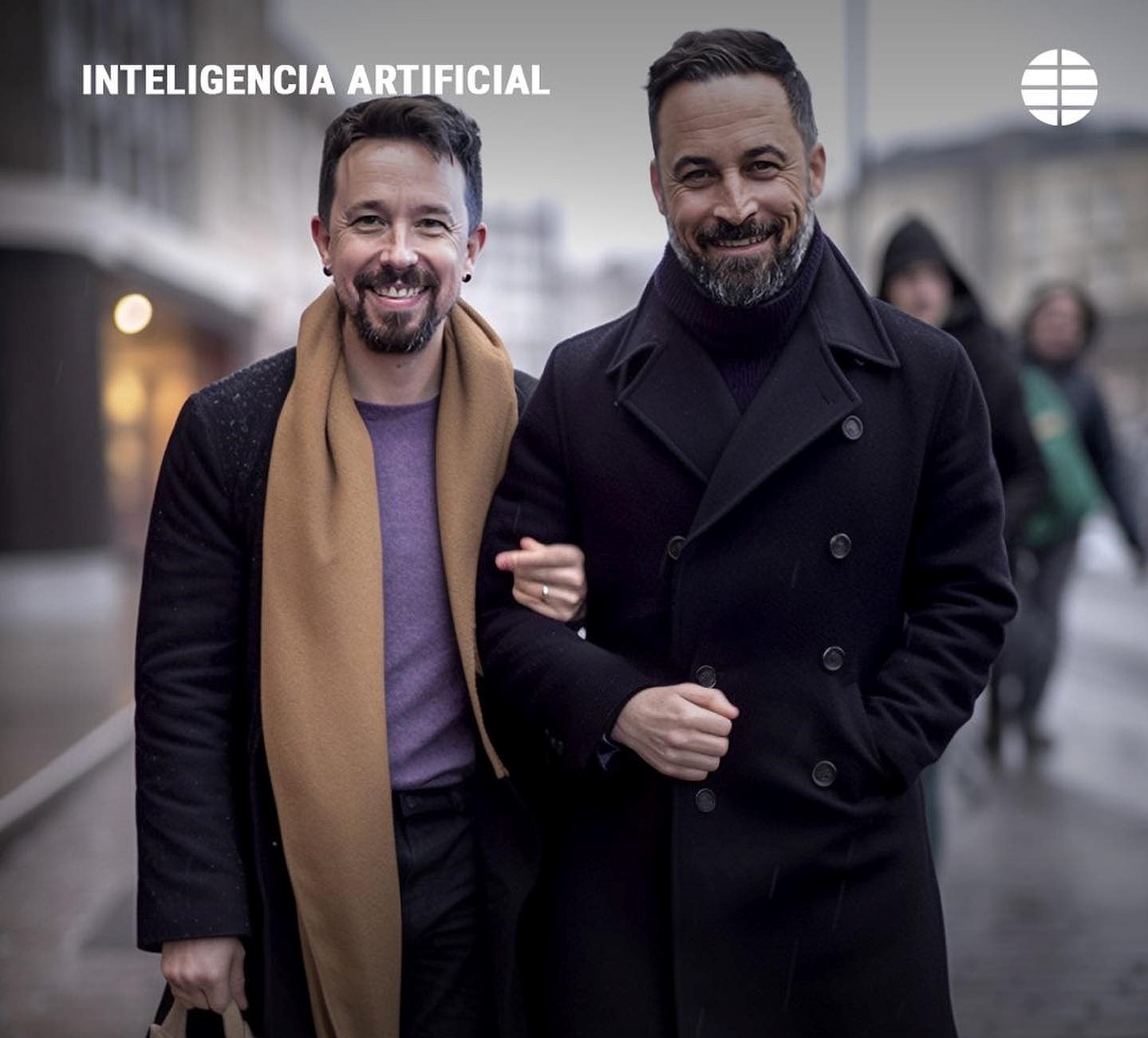He said, if it wasn’t for the spelling mistakes, he might have believed me.
El Mundo ran a front-page article recently, purporting to
show how easy it would be to plant a story with an AI program, using a
mock-up picture of two politicians at daggers drawn, actually
photographed by a clever paparazzi to be holding hands. One of their examples was Pablo Iglesias and Santiago Abascal, commie and nazi, hugging each other and smiling for the camera.
It’s a fake, right enough, but we are all taken in by a good photo, which of course is well worth a thousand words.
While El Mundo graciously acknowledged that the photos (they had four of them) were bogus, designed by artificial intelligence (under instruction – at least for the time being – of a human operator), it also shows how easy it would be for a less – ah – scrupulous news-source to take things a step further.
And while a tricked-out photo is one thing; how about a fake video, with the victim saying something, with his real voice, that he never really said. Perhaps the President with a declaration that will cause a major international crisis; all at the hands of a fellow hunched over a laptop and wearing a hoodie, or maybe a swastika.
After all, half of us will believe anything we are told.
This is nothing new – Frederick Remington, the famous western artist, drew a few anti-Spanish pictures for his boss the newspaper tsar Randolf Hearst back in 1898, helping to back the US war with Spain over Cuba. Imagine what could be done today.
In other fields, AI is proving to be a fascinating tool. A black and white portrait of two women won the Sony World Photography Awards a few weeks ago – until the artist, a programmer, fessed up and turned down the prize. No cameras for him.
I was watching a clever little film earlier this week, designed and scripted by AI, of aliens attacking the Earth. It’s called Last Stand. The voice of Joe Biden – why, it sounds real! There’s another video out there called ‘I am not Morgan Freeman’. Well, you sure look and sound like him, Buddy.
And then, there’s AI music. All it needs is a ‘prompt’ – a suggestion of what the programmer is looking for – and away it goes. For example, there’s Freddy Mercury singing ‘Yesterday’ (he recorded it last week). Or how about Donald Trump singing a prison ballad?
A (half-humorous) quote from a Hollywood composer runs ‘It may be a good time for me to switch careers to brick-layer. That is, until they have AI brick-layers’.
Anyway, give it another year or two… when the home computer decides it’s had enough of looking at porn or going on Facebook and suddenly locks the front door and deactivates the cell-phone…
The hep word at present is ChatGPT (Generative Pre-trained Transformer). We read that ‘ChatGPT can’t “think” on its own or offer opinions. It can only respond to incredibly specific directions. Once the user gives it the go-ahead along with some other details, ChatGPT engages in complex problem solving and executes tough tasks, like writing an essay, in seconds...’
Like this one.
